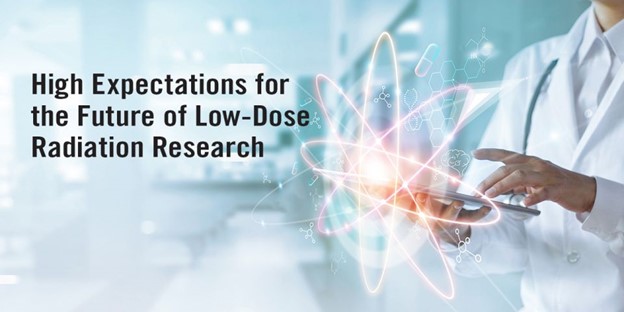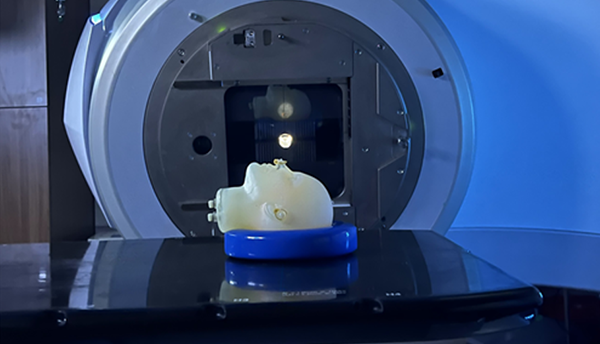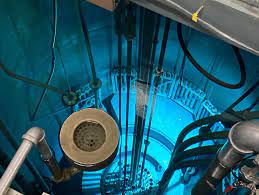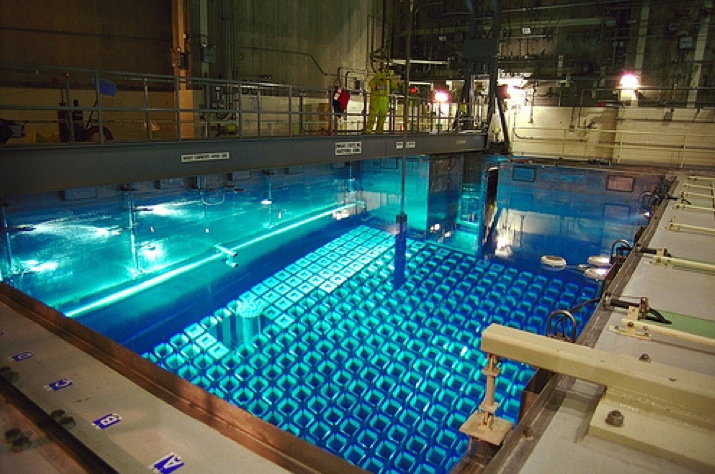ANS virtual event: Experts share their expectations for low-dose radiation research

The National Academies of Science, Engineering, and Mathematics released a report in June recommending that the United States invest a total of $1.5 billion in low-dose radiation research over the next 15 years. Congress is working through the Fiscal Year 2023 appropriations process at this writing, and many in the nuclear community are hopeful that research programs that have been starved of funding and leadership will be reinvigorated and bring long-overdue clarity to questions of low-dose radiation science, policy, and regulation.

Screenshot from the webinar: (From top left, clockwise) Amir Bahadori, Alyse Huffman, Shaheen Dewji, John Cardarelli, Craig Piercy, and Paul Dickman.
“ANS has been engaged for years on this issue and our aim has been simple: to get serious about the science. Let’s stipulate and also regulate to what we know and scientifically lean into what we don't know in a way that doesn't presume a specific outcome,” said ANS Executive Director/CEO Craig Piercy on July 15 as he launched the webinar “High Expectations for the Future of Low-Dose Radiation Research,” which is now available to view online.
Joining Piercy were Amir Bahadori, associate professor at Kansas State University and faculty scientist at KSU Johnson Cancer Research Center; John Cardarelli, president of the Health Physics Society (HPS) and a research health physicist at the National Institute for Occupational Safety and Health; Shaheen Dewji, assistant professor in the nuclear and radiological engineering and medical physics programs at Georgia Institute of Technology; Paul Dickman, senior policy fellow at Argonne National Laboratory; and Alyse Huffman, professional staff member on the Energy Subcommittee of the House Science, Space, and Technology Committee, Majority. Full biographical information for every panelist is available online.
The report: The NASEM report, Leveraging Advances in Modern Science to Revitalize Low-Dose Radiation Research in the United States, was developed over one year of meetings and deliberation by the Committee on Developing a Long-Term Strategy for Low-Dose Radiation Research in the United States. It recommends a new coordinated research program led jointly by the Department of Energy and the National Institutes of Health to study how low doses of radiation (below 100 milligray [mGy]) or low dose rates (less than 5 milligray per hour [mGy/h]) affect disease risk and better define the impacts of radiation doses, dose rates, types of radiation, and exposure duration. The NASEM committee recommended that researchers investigate evidence of an association between low-dose radiation and cardiovascular disease, neurological disorders, immune dysfunction, and cataracts. For some of these health outcomes research to date has relied on risk estimates from studies of individuals who were primarily exposed to higher doses.
Bahadori: ANS recently released a revised Position Statement #41, Risks of Exposure to Low-Level Ionizing Radiation. Bahadori led the revision, and in the statement he outlined ANS’s commitment to advocating for a new low-dose research program since the need was identified as an ANS Grand Challenge in 2017. In early 2020, ANS partnered with the Clean Air Task Force, Oak Ridge Associated Universities, Clear Path, and HPS to align efforts advocating for new low-dose research.
“ANS strongly supported the National Academy study on restarting the low-dose research program and our membership was involved in offering and reviewing the report,” Bahadori said. “While in my opinion the report is not perfect, it does lay out a coherent path forward for the proposed program. The $100 million per year for 15 years recommended in the report sounds like a lot of money, but we do need to consider that in context. For comparison, the cost to add two units to Vogtle is now estimated to be $30 billion, or 20 times the cost of the entire program recommended by the National Academies.”
Dewji: As a member of the committee that produced the NASEM report, Dewji provided a comprehensive review of the committee’s work, which included seven public meetings and more than 80 presentations from government, nongovernmental organizations, the radiation research community, the biomedical community, and communities that have been impacted by low-dose radiation.
This committee returned nine findings, including “that significant investments were required to sustain a low-dose radiation research program, and the committee recommended $100 million annually needed in the first 10 to 15 years, with periodic reassessments,” Dewji said. “Congressionally authorized funds were at the level of $20 million in 2021, but only $5 million was appropriated, and the committee identified that that wasn't even enough to initiate a meaningful low-dose radiation research program. How that $100 million is going to be distributed was outlined as well in the report.”
Dewji explained that “the committee deliberately took a neutral view on whether there are risks at low doses. The committee noted that it's also now possible to detect and quantify such effects using the tools, techniques, and understandings that were described in the report.”
When asked by Piercy about a perception by some in the nuclear community that the tone of the report suggested an emphasis on potential negative health effects of radiation, Dewji went on to explain that the report’s wording “wasn't intended to suggest that there were health effects, but rather that we should now be able to better quantify any effects that really do exist. In relation to hormesis, there are some publications . . . that support the idea that exposures to low level of radiation induce a DNA report repair process or an immune response that could affect any disease endpoints, whether positive or negatively,” Dewji said, later adding that “the committee didn't explicitly use the word ‘hormesis,’ but . . . did call for more research in this area.”
Dewji urged viewers to look closely at how the NASEM committee chose to break down the $100 million requested, with funding earmarked for biology, epidemiology, education and policy, research infrastructure, and program administration.
Cardarelli: The HPS is also strongly engaged in communicating about low-dose radiation, and Cardarelli described their educational materials, including a position statement that declares, “We do not advise estimating health risks to people from ionizing radiation that are near or less than natural background levels, because statistical uncertainties at these levels are so great and there are both epidemiological and human variabilities and a variety of factors that come into play.” The HPS has also produced a series of documentary videos that collectively form a “History of the Linear No-Threshold Model.”
Cardarelli indicated that some published research has provided evidence of beneficial effects of low-dose radiation, known as hormesis, or, an “adaptive response,” and took issue with the NASEM report’s frequent use of the term “adverse health effects.”
“I would certainly call attention to the word ‘adverse’ in front of ‘health effects,’” Cardarelli said. “If that word was removed then it would just be, ‘Let the data speak for itself.’ It could be adverse, or it could be beneficial, or it could be nondifferential. Just say ‘health effects.’”
Dickman: Dickman, who serves on the Nuclear Radiation Studies Board of the National Academies, expressed his appreciation for the work of the committee, adding that “there was an area of disappointment for me, and that had to do with the policy implementation aspects of this report.”
Part of the committee’s charge was to assess the potential monetary and health-related impacts across the broad spectrum of federal and commercial research programs. “Basically, the committee punted,” Dickman said. While the committee’s report stated it was “unable to quantify the low-dose radiation program’s economic impacts because comprehensive estimates of overall costs to comply with current radiation standards are unavailable,” Dickman contended that some information on economic impacts in fact is available.
He emphasized that unresolved questions about the costs and implementation of low-dose radiation regulation remain important. “How do those adjustments and radiation protection standards and guidance get promulgated and implemented?” he asked rhetorically. “Science for science’s sake is great, but we also want to see science influence policy, and that's more difficult.”
Huffman: As a congressional staff member, Huffman was involved in the creation of the legislation in the Consolidated Appropriations Act of 2021 that called for the DOE to reestablish a low-dose radiation research program and work with the National Academies to develop a research agenda, so she was able to supply detailed information on the intention of the law and the congressional appropriations process.
“The first thing that I think is most often misconceived is that we aren't trying to find a single home for radiation research within the federal government,” Huffman said. “The law . . . doesn't say that there should be a lead agency for low-dose radiation research within the federal government. It doesn't say that there shouldn't be either, to be clear. We were able to authorize a program within the Department of Energy. That doesn't mean that other committees or other agencies within the federal government can't have their own programs or aren't doing their own research.” Huffman added that the legislation reestablishing the program was “not intended to prescribe an outcome of the applicability of LNT or regulatory changes if low doses of radiation are harmful or helpful.”
Huffman also noted that the American Innovation and Competitiveness Act authorized an interagency program on radiation coordination through the White House Office of Technology Policy and emphasized that the $100 million recommended by the NASEM committee was for a complete interagency program, not for the DOE alone. While the House has proposed $20 million for the DOE low-dose radiation research program, the congressional appropriations process is still ongoing at this writing.
“A combination of factors”: Piercy brought the discussion full circle by asking his panelists, “How much of the low-dose radiation conundrum is a scientific research problem that that we can find the answer to, and how much of it is a communication problem?”
Dickman noted that “all the research may point in one direction. But if you can't communicate it, if you can't overcome people's concerns and prejudices, you're basically not going to be able to implement policy and change.”
Bahadori agreed, adding that “communications research is scientific research. Certainly in a different area than the epidemiology or the radiobiology that that we tend to focus on. But it's a crucial component and all of it does contribute.”
Dewji summed up the dilemma and the critical need to fund and initiate a low-dose radiation research program. “Is the low-dose problem really a research problem? Is it a communications problem? Is it a sociological problem? It really is a combination of all those factors,” she said. “We're limited about our knowledge about risks and of exposures at low doses of radiation. Policy making is not strongly evidence based as a result. . . . It's now possible to substantially improve our understandings of the risk as well. Not initiating this low-dose program will lead to a continued scientific and policy debate about the risks of low doses of radiation, and that would be to the detriment of adequate protection for patients, workers, and members of the public from any adverse effects—or just effects in general—of radiation.”








